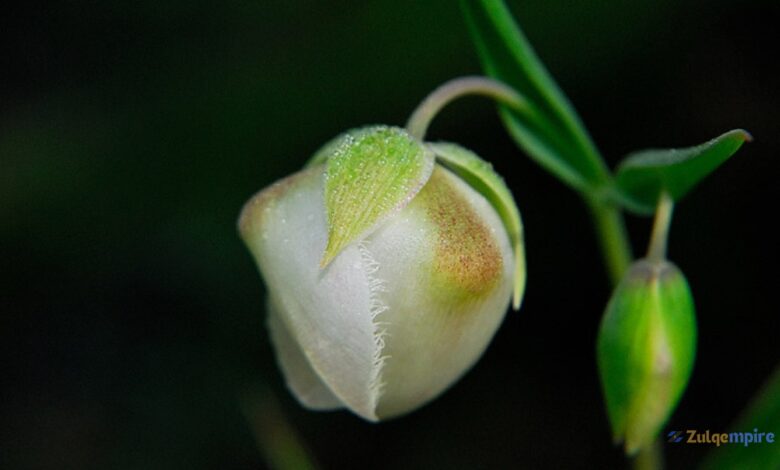Enchanting Enigma: “Fairy Lantern” Secrets

Fairy Lantern Secrets: A mesmerizing display occurs deep inside the lush canopy of tropical forests. A unique flower, the appropriately titled “fairy lantern,” emerges from the rotting leaves and moist dirt. In addition to its breathtaking appearance, this otherworldly flower from the Thismia species conceals an intriguing secret: it is a parasitic plant.
Life Without Sunlight
The pigment chlorophyll gives plants a green color and enables them to absorb sunlight for energy production through photosynthesis; however, fairy lanterns do not contain chlorophyll. Thanks to this transformation, the Fairy Lantern Secrets is now a “mycoheterotroph,” or an organism that feeds only on fungus. As it breaks down organic waste, its fine roots hook up with underground fungal networks, drawing nutrients and carbohydrates from the decaying organic matter.
Due to its unique adaption, the fairy lantern can survive and even grow in a rainforest’s dark, shaded understory, where light is scarce. The incredible variety of life on Earth results from the clever adaptations that various creatures have developed to deal with harsh conditions.
A beacon in the Darkness
The flower is the most exciting part of the fairy lantern. The blossom, sometimes characterized as “lantern-like,” can have a funnel, bell, or lobed shape, contingent upon the species. Translucent and waxy, these blossoms come in a rainbow of colors, from white and cream to bright yellow and red.

The delicate flower attracts pollinators, an essential function despite its fragile look. For the Fairy Lantern Secrets, the world is always dark, and insects need to spread their pollen to reproduce. Some species release a pleasant aroma; others develop complex structures that imitate foods appealing to specific pollinators.
A new species discovered in Malaysia, Thismia malayana, is a prime example of this intriguing tactic. The tentacle-like structures on its vivid yellow blossom are thought to resemble the bodies of fungus gnats, which are widespread insects in tropical rainforests. This cunning trickery entices the gnats, which help plants to share pollen.
Historical Window
The fairy lantern’s parasitic nature challenges scientists studying its evolutionary history. Because these plants lack chlorophyll and other structures found in most plants, they leave minimal fossil evidence. However, recent discoveries offer glimpses into their past. In 2017, researchers rediscovered Thismia neptunis in Borneo after it had vanished from scientific records for 151 years. This rediscovery highlights the vast biodiversity yet to be explored in tropical rainforests.
Also Read: Earth-Sized Planet Found: Possible Life Habitat on Long-Lived Star
Combating Time
Due to habitat degradation, fairy lanterns are beautiful but endangered. Deforestation and climate change disturb rainforest plants’ delicate fungal networks. Their rarity and special needs make regulated cultivation difficult.
Protecting these mysterious plants requires conservation. It is believed that by studying their unique ties with fungi and making rainforest preservation a top priority, we can ensure their survival and learn more about the complex web of life in the rainforest.
Beyond Beauty: Fairy Lantern Science

Beyond its allure as a flower, the Fairy Lantern Secrets has many other purposes. It sheds light on the intricate web of relationships in the rainforest understory. How have plants evolved to acquire nutrients, and whether or not there are other ways for plants to get nutrients?
Studying these plants can teach us a lot about the complex interdependencies that keep ecosystems functioning well and how creatures adapt to harsh conditions. Future findings in mycorrhizal symbiosis may have implications for sustainability. Agriculture may also emerge from studies of fairy lanterns’ relationships with fungus.
The Future of Fairy Lantern
Finding more “fairy lantern” species like Thismia malayana highlights—the need for ongoing research and preservation initiatives and the incredible variety of plant life. Unveiling the mysteries of these mysterious plants opens doors to new scientific discoveries and deepens our understanding of the complex web of life. The fairy lantern symbolizes creativity, and light may thrive in the darkest places. If we can decipher its secrets, we can save an exciting creature and learn more about our amazing world.




